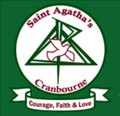Community News

Recreational fishing in Victoria
The Victorian Government is proactive in encouraging all Victorians to fish, specifically focusing on the involvement of women, children, and people from diverse backgrounds.
We educate fishers and the community about responsiblefishing practices and promote stewardship of our precious aquatic and animal resources via our Marine and Freshwater Discovery Centre, Education and Engagement Unit and funding of Fishcare Victoria Inc.
Recreational fishing offers terrific opportunities for people of all ages, skills, abilities, and backgrounds to enjoy a funand healthy activity and build social connections. Our aboriginal heritage is also deeply linked to fishing, with thousands of years of indigenous fishing history in Victoria.
The VFA run a range of free community fishing festivals across the State, stock 10 million fish into Victoria’s waterwayseach year, including a range of threatened species, install fishing and boating infrastructure to improve access, install recreational fishing reefs and improve habitat and undertake important research into Victoria’s many different speciesof seafood.
For more information about the VFA, recreational fishing opportunities in Victoria and/or a potential future career innatural resource management for your students, please visit www.vfa.vic.gov.au.Little Anglers Hub
The VFA has created the kid-friendly Little Anglers Hub website (www.vfa.vic.gov.au/littleanglerkit), written specificallyfor children with useful information, instructional videos about how to safely set up and use the kits, being safe aroundthe water, as well as advice on where to go fishing in Victoria.
The link below is to a short safety video that is posted on the Little Anglers hub website, reinforcing the above safetymessages to students.https://youtu.be/drPLpKXpC3w
Please note that fishing equipment is not for human consumption. If swallowed, hooks can cause serious harm and leadsinkers can be toxic. Young children and those with some disabilities including pica disorder are especially vulnerable and should be supervised whilst fishing. If a child does swallow a hook or lead sinker, seek medical assistanceimmediately - don’t wait for it to pass.
If you would like any additional information about this exciting commitment, please visit the Victorian FishingAuthority’s Little Angler Kits FAQs for parents, located on the VFA’s website (www.vfa.vic.gov.au).
SAFE AROUND SCHOOLS
Getting children to school safely is everyone's job. There are lots of children, parents and cars all trying to get to the same place at the same time - with limited car parking.
The following link is a flyer promoting Safe Around Schools and contains some excellent advice on keeping kids safe around schools.
Over the last 6 months the school has been lobbying for a pedestrian crossing to be installed on Scott Street to help make our area safer for pedestrians. We have also been working with the City of Casey to review the parking options and issues with road congestion.
BIKE SAFETY
It is great to see many children riding bikes to school. Please ensure that if your child is riding a bike or scooter to school that they are wearing a helmet correctly and walk their bike through the school car park and across our pedestrian crossings. It is dangerous to have children riding bikes between cars and across crossings.
Helping children to be safe around traffic
Road safety skills are best learnt in the real traffic environment. Children learn primarily by experience and adult interaction helps them to learn.
You can help by talking with your child as you ride. Ask questions about roads, signs, traffic, and how and where you can ride safely.To help your child become a safe cyclist, let them practise often on footpaths and offer tips on how to ride safely. Children need to develop the skills to be able to ride in a straight line, brake properly and turn corners safely.Ride in designated areas such as bicycle paths when possible. By law, children under 13 years of age can ride on the footpath, and adults can too when they are supervising them. Find out if your child's school offers 'Bike Ed', which teaches children about road safety and cycling skills.
Bicycle helmets for children
Bicycle helmets are effective in protecting child cyclists against head, brain and facial injuries. Wearing a helmet can reduce the risk of head injury by 60 to 90%.
It is compulsory to wear a helmet when riding a bicycle in Victoria on any road or road-related area like a bike path, bike lane, shared footpath or separated footpath. Tricycles with a pedal and chain are considered bicycles under the road rules.Your child's helmet should be:
- approved – make sure the helmet carries the Australian Standard mark, showing that it is safety approved and meets the Australian/New Zealand Standard AS/NZS 2063
- the right size and correctly fitted – the helmet should be comfortable and not too tight or loose. Caps should not be worn under helmets as they ruin the fit – your child can wear a visor over the helmet to protect them from the sun. Choose a helmet that is not too heavy and provides good ventilation
- positioned properly – the helmet should sit level on the rider's head, covering the forehead with the rim just above the eyebrows. The straps should be correctly adjusted and the buckle securely fastened. The straps should form a 'V' shape with the plastic strap guide sitting just under the earlobe. Make sure straps are not twisted. The buckle should be close up under your child's chin
- kept in good condition – a helmet is designed to protect a person's head for one impact only. If the helmet has been involved in an accident or if it has been dropped from a height, you must replace it, even if there is no visible damage. Do not leave a helmet exposed to direct sunlight when not in use. Make sure the foam is not old and crumbling, and clean the helmet according to the manufacturer's instructions.
